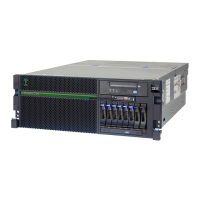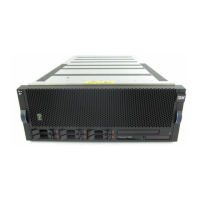Chapter 2. Architecture and technical overview 69
For detailed information about SAS cabling of external storage, see the IBM Power Systems
Hardware information center:
http://publib.boulder.ibm.com/infocenter/powersys/v3r1m5/index.jsp
Table 2-14 compares features of parallel SCSI and SAS.
Table 2-14 Comparison parallel SCSI to SAS
2.7.6 PCIe RAID and SSD SAS Adapter
A new SSD option for selected POWER7 and POWER7+ processor-based servers offers a
significant price-for-performance improvement for many client SSD configurations. The new
SSD option is packaged differently from those currently available with Power Systems. The
new PCIe RAID and SSD SAS adapter has up to four 177 GB SSD modules, plugged directly
onto the adapter, saving the need for the SAS bays and cabling that are associated with the
current SSD offering. The new PCIe-based SSD offering can save up to 70% of the list price,
and reduce up to 65% of the footprint, compared to disk enclosure based SSD, assuming
equivalent capacity. This benefit is dependant on the configuration required.
Feature Parallel SCSI SAS
Architecture Parallel, all devices connected to
shared bus
Serial, point-to-point, discrete signal
paths
Performance 320 MBps (Ultra320 SCSI),
performance degrades as devices
added to shared bus
3 Gbps, roadmap to 12 Gbps,
performance maintained as more
devices added
Scalability 15 drives Over 16,000 drives
Compatibility Incompatible with all other drive
interfaces
Compatible with Serial ATA (SATA)
Max. cable length 12 meters total (must sum lengths of
all cables used on bus)
8 meters per discrete connection,
total domain cabling hundreds of
meters
Cable from factor Multitude of conductors adds bulk,
cost
Compact connectors and cabling
save space, cost
Hot pluggability Yes Yes
Device identification Manually set, user must ensure no
ID number conflicts on bus
Worldwide unique ID set at time of
manufacture
Termination Manually set, user must ensure
proper installation and functionality
of terminators
Discrete signal paths enable device
to include termination by default
